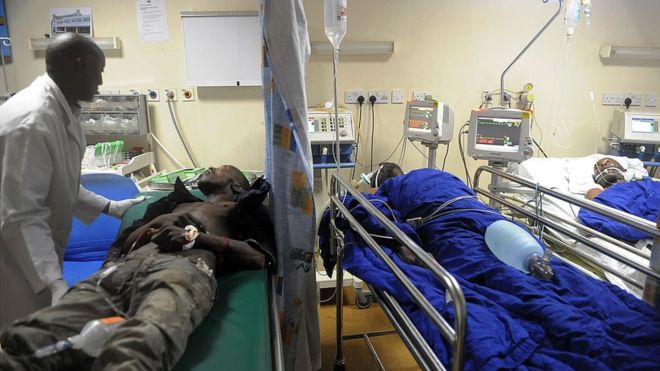18Oct2017
Outcome of a working diagnosis
by admin, 0 Comments

Outcome of a working diagnosis of “psychosis” in relation to DSM-IV diagnostic criteria in a Kenyan in-patient cohort at Mathari hospital, Nairobi
D M Ndetei, L I Khasakhala, F A Ongecha, V Mutiso, D A Kokonya
Abstract
Background: When a patient presents with mental illness and displays psychotic symptoms which are not clearly delineated, a clinical diagnosis of psychosis is usually entertained.
Aim: To determine the underlying Diagnostic and Statistical Manual of Mental Disorders-Fourth edition (DSM-IV) disorders in clinical entities admitted with a working diagnosis of “psychosis” at Mathari Psychiatric Hospital, Nairobi, Kenya.
Study Design: Descriptive cross-sectional quantitative study.
Method: A total of 138 patients with a working diagnosis of “psychosis” on admission at Mathari Hospital during the period of this study were recruited over a one-month period. Their DSM-IV diagnoses were made using the Structured Clinical Interview for DSM-IV (SCID). Analysis of the results was done using SPSS version 11.5.
Results: Nearly three quarters (72.5%) of the patients were male, 68.5% were aged between 20 and 34 years and 63.7% reported that they were single. Nearly half (49.2%) had attained up to 12 years of formal education and 90% were dependants of a member of the family. The most common DSM-IV diagnoses were schizophrenia, bipolar disorder, substance abuse, depression and anxiety disorders. Co-morbidity was recorded with an average of three DSM-IV disorders.
Conclusion: “Psychosis” as a working diagnosis was reported in relatively young adults. The patients whose working clinical diagnosis was “psychosis” met the criteria for an average of three DSM-IV diagnoses. There is need for a proactive policy in clinical practice so that definitive diagnoses rather than just “psychosis” are made and appropriate management initiated as early as possible.
Recent Posts
- Editor’s choice: Tackling infectious diseases, NCDs and sexual reproductivehealth issues as we enter our 24th year of remarkable growth
- Preconception and contraceptive care for women living with HIV/AIDSattending antiretroviral treatment clinics in Lagos State, Nigeria
- Effects of SNPs on TNF-α and IL-10 cytokine expression in TB and HIVpatients in the Capricorn district, Limpopo Province, South Africa
- Prevalence of Schistosomiasis in a neglected community, South western Nigeria at two points in time, spaced three years apart
- Review of Leishmaniasis in the Middle East and North Africa
Recent Comments
Categories
- 2001 Issues
- 2002 Issues
- 2003 Issues
- 2004 Issues
- 2005 Issues
- 2006 Issues
- 2007 Issues
- 2008 Issues
- 2009 Issues
- 2010 Issues
- 2011 Issues
- 2012 Issues
- 2013 Issues
- 2014 Issues
- 2015 Issues
- 2016 Issues
- 2017 Issues
- 2018 Issues
- 2019 Issues
- 2024 Issues
- Articles
- December issue
- December Release
- June Issue
- June Release
- March Issue
- March Issue
- March Release
- News
- number / volume 2
- number /volume 1
- number /volume 1
- number /volume 1 2008
- number 1
- number 1
- number 1
- number 1
- number 1
- number 1
- number 1
- number 2
- number 2
- number 2
- number 2
- number 2
- number 2
- number 2
- number 2 special Issue
- number 2 special Issue 2
- number 3
- number 3
- number 3
- number 3
- number 3
- number 3
- number 3
- number 4
- number 4
- number 4
- number 4
- number 4
- number 4
- number/ volume 3 2008
- number/ volume 4 2008
- number/volume 1
- number/volume 1
- number/volume 2
- number/volume 2
- number/volume 2 2008
- number/volume 3
- number/volume 3
- number/volume 3
- number/volume 4
- number/volume1
- September Issue
- September Release
- Special Edition
- special Issue
- Uncategorized
- Vol. 24 No. 1 (2024)
- volume 1
- volume 1
- volume 1
- volume 2
- volume 2
- volume 2
- volume 2
- volume 2
- volume 3
- volume 3
- volume 3
- volume 3
- volume 4
- volume 4
- volume 4
- volume 4
- volume1
Categories
- 2001 Issues
- 2002 Issues
- 2003 Issues
- 2004 Issues
- 2005 Issues
- 2006 Issues
- 2007 Issues
- 2008 Issues
- 2009 Issues
- 2010 Issues
- 2011 Issues
- 2012 Issues
- 2013 Issues
- 2014 Issues
- 2015 Issues
- 2016 Issues
- 2017 Issues
- 2018 Issues
- 2019 Issues
- 2024 Issues
- Articles
- December issue
- December Release
- June Issue
- June Release
- March Issue
- March Issue
- March Release
- News
- number / volume 2
- number /volume 1
- number /volume 1
- number /volume 1 2008
- number 1
- number 1
- number 1
- number 1
- number 1
- number 1
- number 1
- number 2
- number 2
- number 2
- number 2
- number 2
- number 2
- number 2
- number 2 special Issue
- number 2 special Issue 2
- number 3
- number 3
- number 3
- number 3
- number 3
- number 3
- number 3
- number 4
- number 4
- number 4
- number 4
- number 4
- number 4
- number/ volume 3 2008
- number/ volume 4 2008
- number/volume 1
- number/volume 1
- number/volume 2
- number/volume 2
- number/volume 2 2008
- number/volume 3
- number/volume 3
- number/volume 3
- number/volume 4
- number/volume1
- September Issue
- September Release
- Special Edition
- special Issue
- Uncategorized
- Vol. 24 No. 1 (2024)
- volume 1
- volume 1
- volume 1
- volume 2
- volume 2
- volume 2
- volume 2
- volume 2
- volume 3
- volume 3
- volume 3
- volume 3
- volume 4
- volume 4
- volume 4
- volume 4
- volume1
